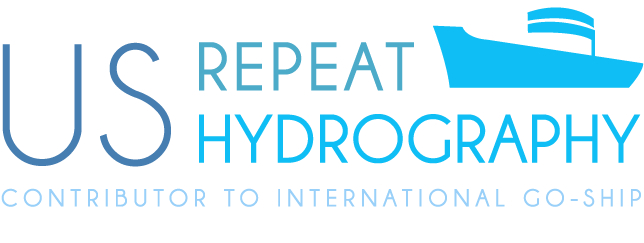
02 October 2013
Dear Colleagues,
We are homeward bound!
At 05:25 local time on Tuesday, 19 April 2011, the rosette from station 140, the easternmost station we planned, and the last one on CLIVAR S04P, was brought into the Baltic Room. This completed the over-the-side work for our cruise, though it took a day to analyze the samples that we backlogged as we crossed the eastern boundary of our study area. We arrived at the eastern end a little earlier than expected due to an unprecedented (for this cruise) eight day string of days with light winds, plus our equipment worked nearly flawlessly.
So what did we do next? We went on an oceanographic treasure hunt! Believe it or not, five days earlier a satellite had reported to its base station that a400 meter long biophysical mooring for Dr. Richard Limeburner (Woods Hole), deployed in 450 meters of water more than ten years ago by Jim Ryder (the mooring tech on our cruise), but lost in 2001 when it failed to rise to the surface when triggered to do so, had all of a sudden come to the surface and contacted the satellite. (Good batteries!) The location was only about 8 hours away. So after our final station we motored over to its last reported location and - voila! - there it was! Jim, the RPSC marine techs, and our students and other helpers then set to work, recovering the entire string of instruments, covered with ten years of marine growth. Everything was cleaned and will be returned to Dr. Limeburner. What a wild coincidence!
We are now on our way to Punta Arenas, Chile, which is our end port for this long cruise. We're getting a bit of a weather blast today - after all, this is Drake Passage, infamous for its heavy weather - yet we are actually ahead of schedule and are arriving a little early. We still will not be able to begin our unloading until Monday, due to Easter.
Tonight we will hold a little variety show on the ship, featuring skits and music from our "polliwogs" (those for whom this was their first Antarctic crossing) plus some of the "red noses". There will be a traditional induction for the polliwogs tomorrow morning.
And that's just about that for this cruise. It's been a long haul - 64 days at sea without a port stop is a new record for most if not all of us. But we achieved our scientific objectives (except for the iced-up southern end of P18 and mooring recoveries there), and enjoyed a safe and productive time at sea. We are very grateful to our shipmates from Edison Chouest Offshore, who operate the Nathaniel B. Palmer and support us and our science so well, thankful for our support from our seven colleagues from Raytheon Polar Services Corporation, and deeply appreciative of our support for this venture from the National Science Foundation, the National Oceanic and Atmospheric Administration, and the National Aeronautics and Space Administration.
We did it!
All is well on the Nathaniel B. Palmer.
Jim and Alex